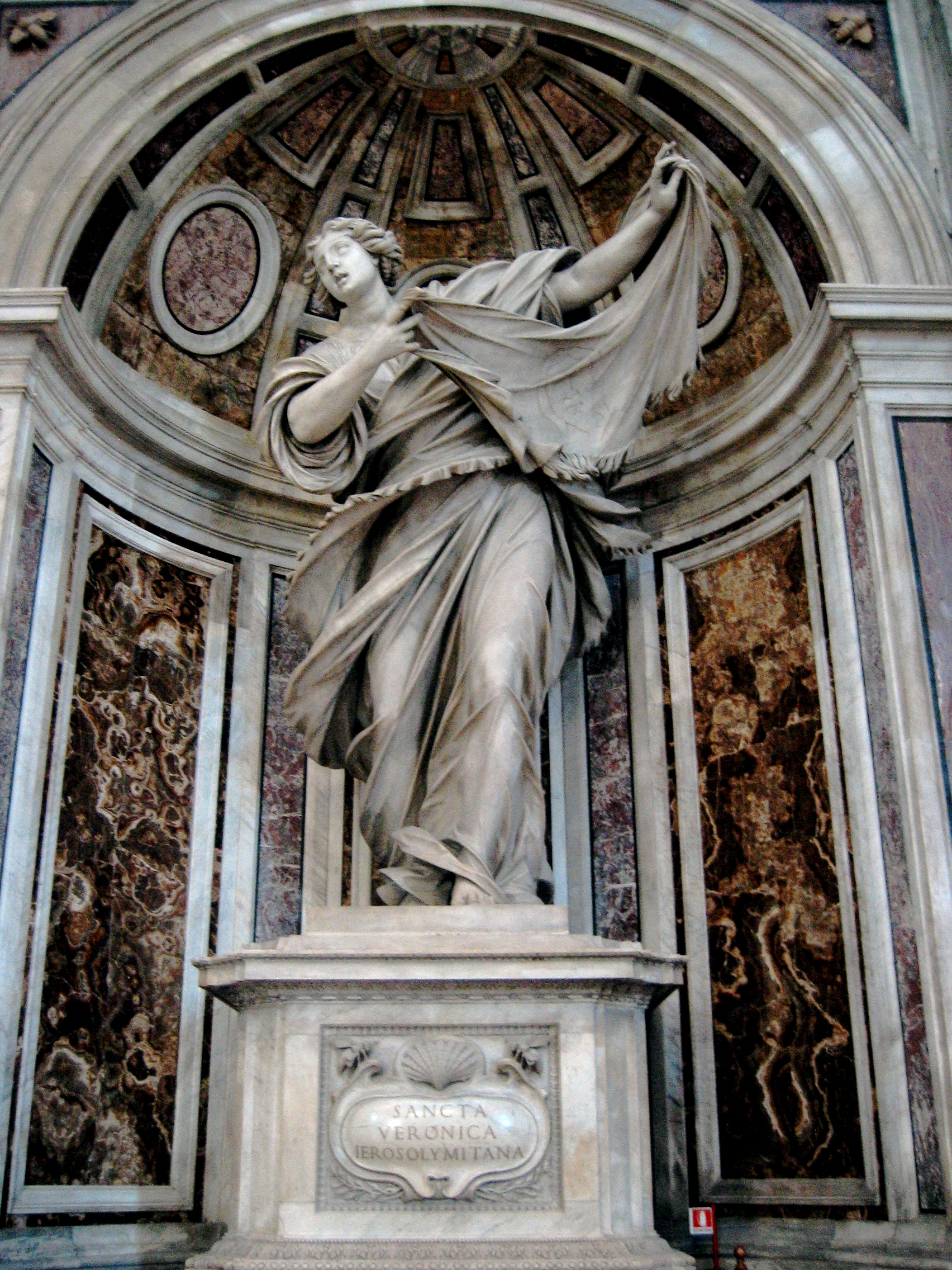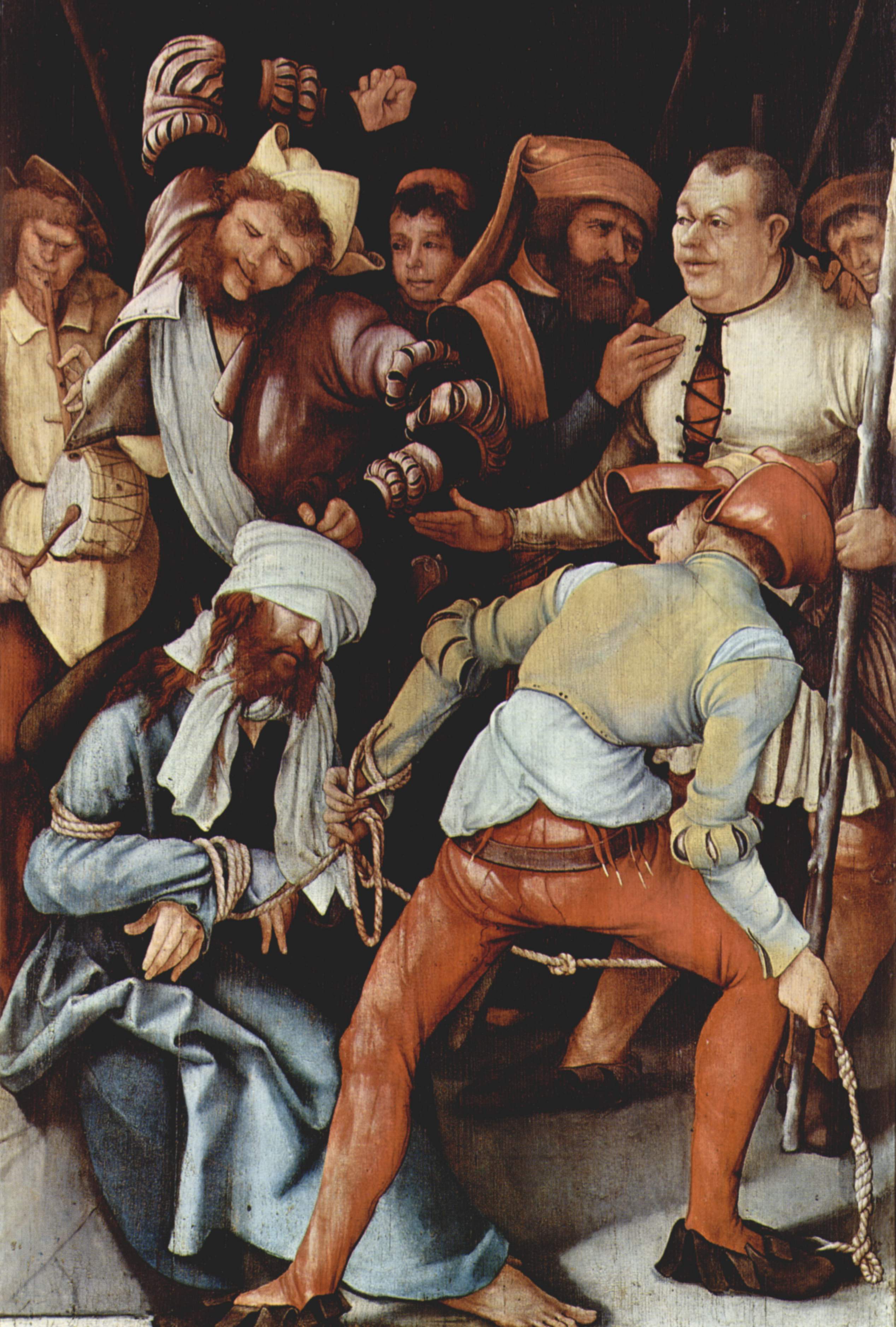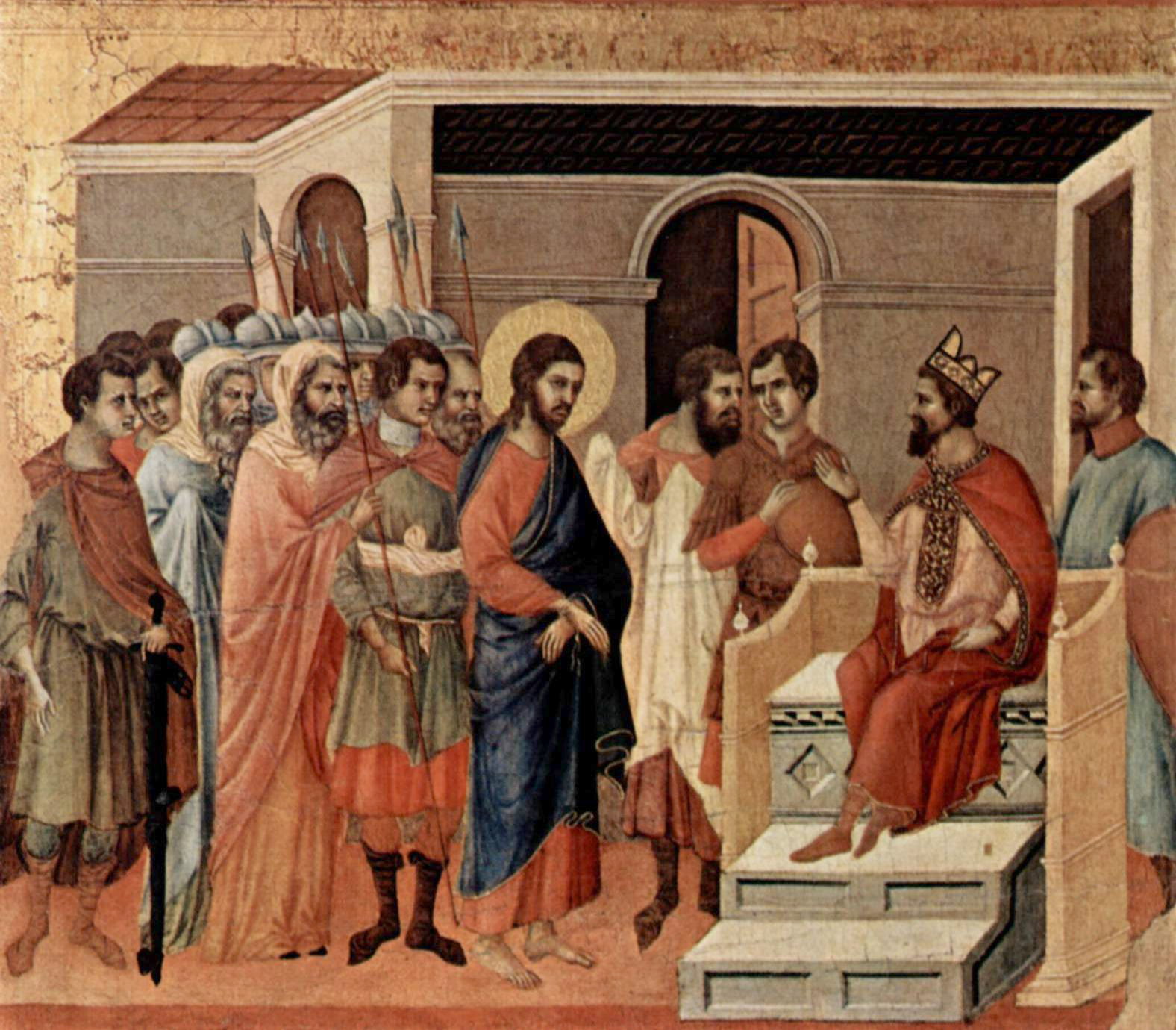|
Verkiai Calvary
Verkiai Calvary or Vilnius Calvary is the second oldest calvary in Lithuania after Žemaičių Kalvarija. It is located in Verkiai, a neighborhood of Vilnius, capital of Lithuania. The calvary was built in 1662–69 as a sign of gratitude for the victory in the Second Northern War (1655–60). The calvary includes 20 brick chapels, seven wooden and one brick gate, and one bridge with a wooden chapel. The path ends at the Church of the Discovery of the Holy Cross. In 1962 all chapels, except four closest to the church, were destroyed by the Soviet authorities. The calvary was reconstructed in 1990–2002. Stations The calvary has 35 stations: # The Last Supper # On the Way to the Mount of Olives # In the garden of Gethsemane # Arrest of Jesus # Crossing the Kidron Valley # Disciples flee Jesus before the Gate of the Town # At the First Gate of Zion # Jesus taken to Annas # At the High Priest Caiaphas # Jesus imprisoned in the basement of Caiaphas' Palace # The second time at ... [...More Info...] [...Related Items...] OR: [Wikipedia] [Google] [Baidu] |
Kidron Valley
The Kidron Valley ( classical transliteration, ''Cedron'', from he, נחל קדרון, ''Naḥal Qidron'', literally Qidron River; also Qidron Valley) is the valley originating slightly northeast of the Old City of Jerusalem, which then separates the Temple Mount from the Mount of Olives. It continues in a general south-easterly direction through the Judean desert in the West Bank, reaching the Dead Sea near the settlement of Ovnat, and descending along its course. The ancient Mar Saba (' Saint Sabbas') monastery is located in the lower part of the valley. Other names include ar, وادي الجوز, Wadi el-Joz, 'Valley of the Walnut', for the upper segment near the Temple Mount; and Wadi en-Nar, 'Fire Valley', for the rest of it – with at least the segment at Mar Saba monastery also known in the 19th century as Wadi er-Rahib, 'Monk's Valley'. In its upper part, the neighbourhood of Wadi al-Joz bears the valley's Arabic name.Goffart, Walter. After Rome's Fall. Toronto: Un ... [...More Info...] [...Related Items...] OR: [Wikipedia] [Google] [Baidu] |
Burial Of Jesus
The burial of Jesus refers to the entombment of the body of Jesus after crucifixion, before the eve of the sabbath described in the New Testament. According to the canonical gospel narratives, he was placed in a tomb by a councillor of the sanhedrin named Joseph of Arimathea; according to , he was laid in a tomb by "the council as a whole." In art, it is often called the Entombment of Christ. Biblical accounts The earliest reference to a burial of Jesus is in a letter of Paul. Writing to the Corinthians around the year 54 AD, he refers to the account he had received of the death and resurrection of Jesus ("and that he was buried, and that he was raised on the third day according to the Scriptures"). The four canonical gospels, written between 66 and 95, conclude with an extended narrative of Jesus' arrest, trial, crucifixion, entombment, and resurrection.Powell, Mark A. ''Introducing the New Testament''. Baker Academic, 2009. They narrate how, on the evening of the Cruci ... [...More Info...] [...Related Items...] OR: [Wikipedia] [Google] [Baidu] |
Descent From The Cross
The Descent from the Cross ( el, Ἀποκαθήλωσις, ''Apokathelosis''), or Deposition of Christ, is the scene, as depicted in art, from the Gospels' accounts of Joseph of Arimathea and Nicodemus taking Christ down from the cross after his crucifixion (). In Byzantine art the topic became popular in the 9th century, and in the West from the 10th century. The Descent from the Cross is the 13th Station of the Cross, and is also the sixth of the Seven Sorrows of the Blessed Virgin Mary. Other figures not mentioned in the Gospels who are often included in depictions of this subject include John the Evangelist, who is sometimes depicted supporting a fainting Mary (as in the work below by Rogier van der Weyden), and Mary Magdalene. The Gospels mention an undefined number of women as watching the crucifixion, including The Three Marys, (Mary Salome being mentioned in ), and also that the Virgin Mary and Mary Magdalene saw the burial (). These and further women and unnamed male ... [...More Info...] [...Related Items...] OR: [Wikipedia] [Google] [Baidu] |
Crucifixion Of Jesus
The crucifixion and death of Jesus occurred in 1st-century Judea, most likely in AD 30 or AD 33. It is described in the four canonical gospels, referred to in the New Testament epistles, attested to by other ancient sources, and considered an established historical event. There is no consensus among historians on the details. Christopher M. Tuckett in ''The Cambridge companion to Jesus'' edited by Markus N. A. Bockmuehl 2001 Cambridge Univ Press pp. 123–124 In the canonical gospels, Jesus is arrested and tried by the Sanhedrin, and then by Pontius Pilate, who sentences him to flagellation and finally crucifixion by the Roman Empire.''The Cradle, the Cross, and the Crown: An Introduction to the New Testament'' by Andreas J. Köstenberger, L. Scott Kellum 2009 pp. 104–108Evans, Craig A. (2001). ''Jesus and His Contemporaries: Comparative Studies'' p. 316 Jesus was stripped of his clothing and offered vinegar mixed with myrrh or gall (likely posca ... [...More Info...] [...Related Items...] OR: [Wikipedia] [Google] [Baidu] |
Saint Veronica
Saint Veronica, also known as Berenike, was a woman from Jerusalem who lived in the 1st century AD, according to extra-biblical Christian sacred tradition. A celebrated saint in many pious Christian countries, the 17th-century ''Acta Sanctorum'' published by the Bollandists listed her feast under July 12, but the German Jesuit scholar Joseph Braun cited her commemoration in ''Festi Marianni'' on 13 January. According to Church tradition, Veronica was moved with sympathy seeing Jesus carrying the cross to Calvary and gave him her veil so that he could wipe his forehead. Jesus accepted the offer, and when he returned the veil the image of his face was miraculously captured on it. The resulting relic became known as the Veil of Veronica. The story of Veronica is celebrated in the sixth Station of the Cross in many Anglican, Catholic, and Western Orthodox churches.Vatican WebsitSixth Station/ref> Background There is no reference to the story of Veronica and her veil in the ... [...More Info...] [...Related Items...] OR: [Wikipedia] [Google] [Baidu] |
Simon Of Cyrene
Simon of Cyrene (, Standard Hebrew ''Šimʿon'', Tiberian Hebrew ''Šimʿôn''; , ''Simōn Kyrēnaios''; ) was the man compelled by the Romans to carry the cross of Jesus of Nazareth as Jesus was taken to his crucifixion, according to all three Synoptic Gospels: He was also the father of the disciples Rufus and Alexander. Background Cyrene was located in northern Africa in eastern Libya. A Greco-Egyptian city in the province of Cyrenaica, it had a Jewish community where 100,000 Judean Jews had been forced to settle during the reign of Ptolemy Soter (323–285 BC) and was an early center of Christianity. The Cyrenian Jews had a synagogue in Jerusalem, where many went for annual feasts. Biblical accounts Simon's act of carrying the cross, ''patibulum'' (crossbeam in Latin), for Jesus is the fifth or seventh of the Stations of the Cross. Some interpret the passage as indicating that Simon was chosen because he may have shown sympathy with Jesus. Others point out that the text it ... [...More Info...] [...Related Items...] OR: [Wikipedia] [Google] [Baidu] |
Mary (mother Of Jesus)
Mary; arc, ܡܪܝܡ, translit=Mariam; ar, مريم, translit=Maryam; grc, Μαρία, translit=María; la, Maria; cop, Ⲙⲁⲣⲓⲁ, translit=Maria was a first-century Jewish woman of Nazareth, the wife of Joseph and the mother of Jesus. She is a central figure of Christianity, venerated under various titles such as virgin or queen, many of them mentioned in the Litany of Loreto. The Eastern and Oriental Orthodox, Church of the East, Catholic, Anglican, and Lutheran churches believe that Mary, as mother of Jesus, is the Mother of God. Other Protestant views on Mary vary, with some holding her to have considerably lesser status. The New Testament of the Bible provides the earliest documented references to Mary by name, mainly in the canonical Gospels. She is described as a young virgin who was chosen by God to conceive Jesus through the Holy Spirit. After giving birth to Jesus in Bethlehem, she raised him in the city of Nazareth in Galilee, and was in Jerusal ... [...More Info...] [...Related Items...] OR: [Wikipedia] [Google] [Baidu] |
Flagellation Of Christ
The Flagellation of Christ, sometimes known as Christ at the Column or the Scourging at the Pillar, is a scene from the Passion of Christ very frequently shown in Christian art, in cycles of the Passion or the larger subject of the '' Life of Christ''. It is the fourth station of the modern alternate Stations of the Cross, and a Sorrowful Mystery of the Rosary.''Old Master Paintings and Drawings'' by Roy Bolton 2009 page 70 The column to which Christ is normally tied, and the rope, scourge, whip or birch are elements in the Arma Christi. The Basilica di Santa Prassede in Rome claims to possess the original column. From the 15th century the subject is also painted in individual works, rather than as one of a series of Passion scenes. The most-discussed single work is the enigmatic treatment on a small panel in Urbino by Piero della Francesca (1455–60), whose precise meaning has eluded generations of art historians. At the same time ''Christ at the Column'' or ''Christ at ... [...More Info...] [...Related Items...] OR: [Wikipedia] [Google] [Baidu] |
Barabbas
Barabbas (; ) was, according to the New Testament, a prisoner who was chosen over Jesus by the crowd in Jerusalem to be pardoned and released by Roman governor Pontius Pilate at the Passover feast. Biblical account According to all four canonical gospels there was a prevailing Passover custom in Jerusalem that allowed Pilate, the ' or governor of Judea, to commute (reduce) one prisoner's death sentence by popular acclaim. In one such instance, the "crowd" (''ochlos''), "the Jews" and "the multitude" in some sources, are offered the choice to have either Barabbas or Jesus released from Roman custody. According to the Synoptic Gospels of Matthew,Mark, and Luke, and the account in John, the crowd chooses Barabbas to be released and Jesus of Nazareth to be crucified. Pilate reluctantly yields to the insistence of the crowd. One passage, found in the Gospel of Matthew, has the crowd saying (of Jesus), "Let his blood be upon us and upon our children." Matthew refers to Barabbas onl ... [...More Info...] [...Related Items...] OR: [Wikipedia] [Google] [Baidu] |
Mocking Of Jesus
The mocking of Jesus occurred several times, after his trial and before his crucifixion according to the canonical gospels of the New Testament. It is considered part of Jesus' passion. According to the gospel narratives, Jesus had predicted that he would be mocked (Matthew 20:19, Mark 10:34, and Luke 18:32). The mocking of Christ took place in three stages: immediately following his trial, immediately following his condemnation by Pontius Pilate, and when he was being crucified. The New Testament narratives of Jesus being mocked are filled with irony, while the mockery focuses on Jesus' prophetic and kingly roles. First stage After Jesus' condemnation by the Sanhedrin, (Mark 14:65). He was blindfolded and beaten, and then mocked: "Prophesy! Who hit you?" (Luke 22:63). This was done by those men who "held Jesus" (Luke 22:63, King James Version). The New International Version translates this as "the men who were guarding Jesus", but Joel B. Green takes the phrase to refer to th ... [...More Info...] [...Related Items...] OR: [Wikipedia] [Google] [Baidu] |
Jesus At Herod's Court
Jesus at Herod's court refers to an episode in the New Testament which describes Jesus being sent to Herod Antipas in Jerusalem, prior to his crucifixion.''New Testament History'' by Richard L. Niswonger 1992 page 172 This episode is described in the Gospel of Luke ().''The Gospel according to Luke'' by Michael Patella 2005 page 16 Biblical narrative In the Gospel of Luke, after the Sanhedrin trial of Jesus, the Court elders ask Pontius Pilate to judge and condemn Jesus in Luke 23:2, accusing Jesus of making false claims of being a king. While questioning Jesus about the claim of being the King of the Jews, Pilate realizes that Jesus is a Galilean and therefore under Herod's jurisdiction. Since Herod already happened to be in Jerusalem at that time, Pilate decides to send Jesus to Herod to be tried. Herod Antipas (the same man who had previously ordered the death of John the Baptist and, according to some Pharisees, had plotted to have Jesus killed as well) had wanted to se ... [...More Info...] [...Related Items...] OR: [Wikipedia] [Google] [Baidu] |


.jpg)




.jpg)

